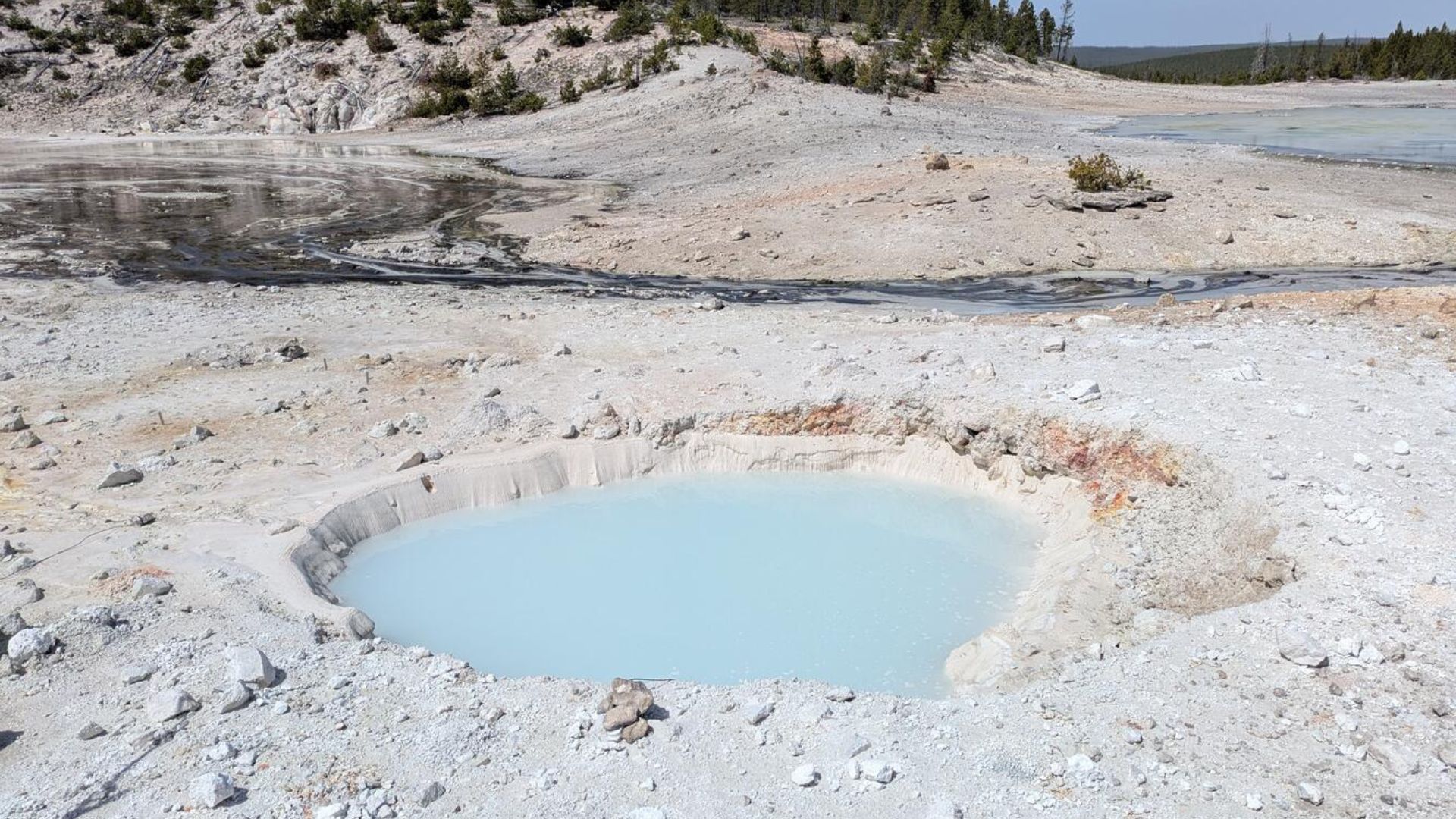In April 2025, Yellowstone National Park geologists were surprised during a routine maintenance check. While inspecting temperature monitoring stations at Norris Geyser Basin, scientists discovered a brand-new thermal feature in Porcelain Basin—a steaming, bright blue pool roughly 13 feet (4 meters) wide.
This thermal pool wasn’t there the last time the area was surveyed in the fall of 2024. The United States Geological Survey (USGS) confirmed the find, noting that the newly discovered pool sits about 1 foot below the surrounding rim and contains light-gray, mud-covered rocks as wide as 30 centimeters.
The water itself is about 109 degrees Fahrenheit (43°C) and glows a soft, sky-blue shade, drawing comparisons to the “blue milk” drink from Star Wars’ Galaxy’s Edge.
But how did this pool form? It turns out nature was busy over the winter holidays.
Clues from space and sound reveal the pool’s mysterious origins
To figure out when and how this pool formed, USGS scientists turned to satellite imagery and a high-tech acoustic monitoring station. The data tells a fascinating story.
Between October and December 2024, satellite images showed no sign of a new thermal feature in the Porcelain Basin. Then, on December 19, the first signs of a shallow depression appeared. By January 6, 2025, a small cavity had developed. By February 13, a fully formed, water-filled pool was visible from space.
At the same time, the acoustic station—set up in 2023 to detect hydrothermal activity using infrasound (very low-frequency sound waves)—recorded several weak acoustic signals. These signals came from the direction of the new pool and were detected on December 25, January 15, and February 11.
However, no seismic signals accompanied them, which would typically be expected during significant hydrothermal explosions.
This suggests that the pool didn’t form from one massive blast. Instead, a series of smaller hydrothermal events likely released steam and pressure in bursts, slowly carving out the cavity. The first of these may have occurred on Christmas Day 2024, with more following into early 2025.
Hydrothermal explosions shaped the feature, but not all at once
The USGS concluded that the pool most likely resulted from multiple small hydrothermal explosions over several weeks. These blasts didn’t shake the ground hard enough to show up on seismic monitors, but they were loud enough—at least in the infrasound range—to be heard by the park’s sensors.
During a hydrothermal explosion, underground water quickly converts to steam due to sudden changes in pressure and temperature. The steam then forces its way to the surface, often blasting apart surrounding rock and mud. At Norris Geyser Basin, such explosions are not uncommon.
For instance, Porkchop Geyser exploded in 1989, flinging debris across the basin. More recently, in April 2024, the Porcelain Terrace area saw another confirmed blast, recorded by the same acoustic station that detected weak signals from this new pool.
With no strong explosive signals from the recent event, it’s likely that the ground cracked open gradually, throwing out light-gray silica mud and stones. As the earth settled and cooled, mineral-rich water filled the depression, creating the thermal pool that now gleams under the Yellowstone sun.
Yellowstone still has surprises, even after decades of study
Yellowstone National Park is home to more than 10,000 thermal features, from bubbling mudpots to steam vents and towering geysers. It’s the largest concentration of such features in the world. Beneath the surface lies a massive magma chamber that heats up groundwater, producing intense hydrothermal activity across the park.
Norris Geyser Basin, in particular, is the park’s oldest and hottest thermal area. It also hosts Steamboat Geyser—the tallest active geyser on Earth. This makes it a hotspot for both tourists and scientists, who monitor changes closely to better understand Earth’s internal processes.
Even with decades of observation, Yellowstone continues to evolve in ways researchers don’t always see coming. This latest thermal pool is a reminder that nature still holds surprises, especially in places where fire, water, and rock meet beneath the surface.
